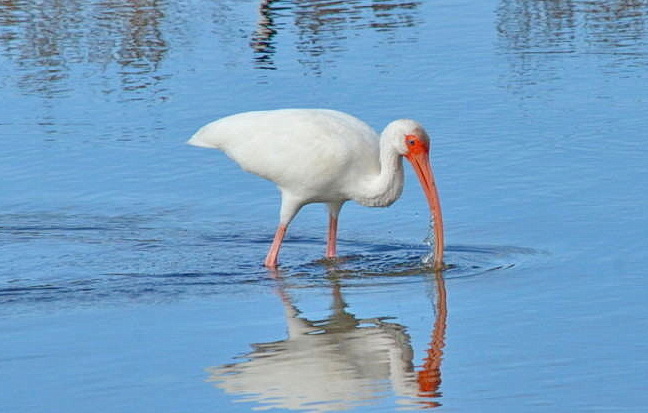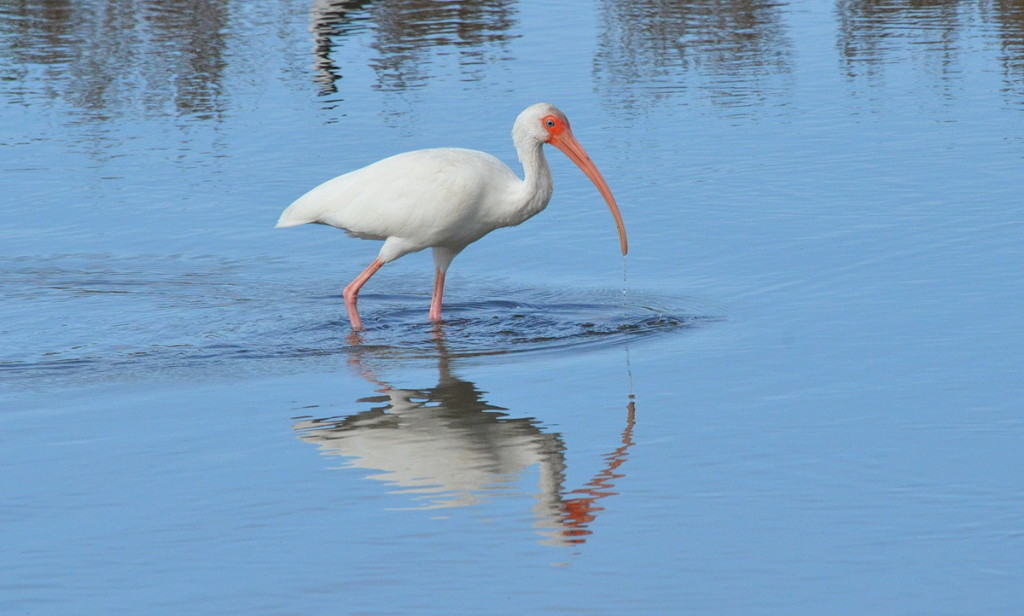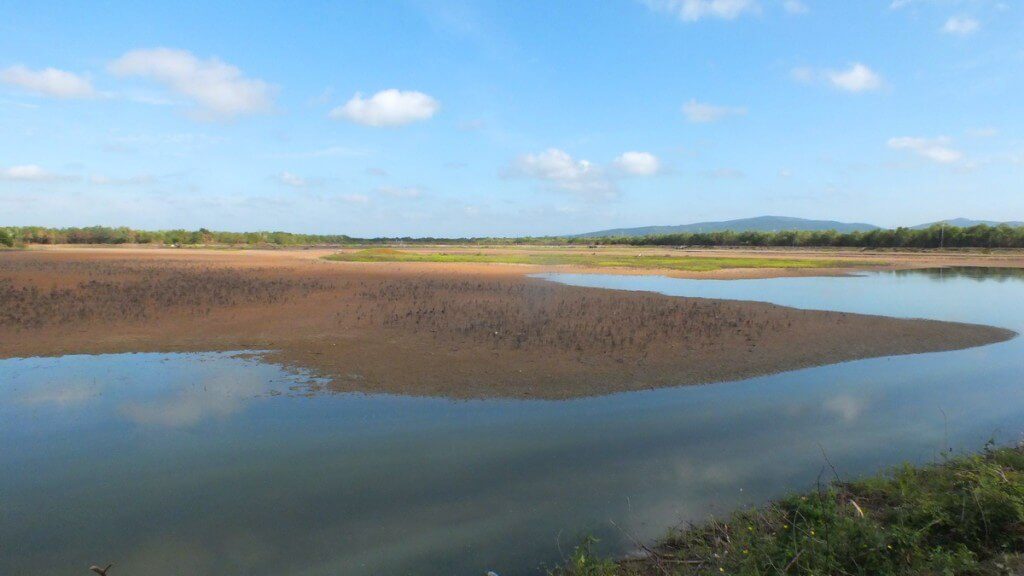White Ibis At The Shrimp Ponds In San Blas

What great fun to set off exploring the vicinity around San Blas, Mexico, in search of wildlife. The morning that Bob and I scoped out the shrimp ponds on the outskirts of this small fishing community, quite a variety of birds met our searching eyes, most of which we had never seen before. Among those plying the water for something to eat was this impressive White Ibis.
When seen from afar, the shrimp ponds appeared little more than a low-lying stretch of land overcome by heavy rainfall,
but once on site, the full scope of the artificial shrimp ponds became evident. Given their location, it was obvious that they had been converted from a section of the mangrove swamp that is prevalent in that area.
This White Ibis was knee-deep in the briny water of the man-made ponds that were rich in aquatic life. Foraging for a selection of small fish, snails, frogs, insects or crabs, a White Ibis moves slowly through the water and sweeps its bill from side to side.
We watched as this Ibis methodically probed the muddy bottom of the pond, able to detect prey by touch with its tactile bill and capture it before the prey could elude its powerful mandibles.
Moving in for the catch, this White Ibis did not need to see its prey but relied on its bill to locate, isolate and capture its food.
A White Ibis is a medium-sized bird that stands about 2 feet (0.6 m) tall. Its overall plumage is a brilliant white, and for me, the most striking characteristic is the long, down-curved reddish-orange bill that sprouts from a pretty pink face.
Bob and I were mesmerized by this unmistakable wading bird as it slowly patrolled the pond, and we soon scanned the environs to see if others were present in the pond or along its shore.
Another adult White Ibis had retreated to a muddy point where it was in good company with some Roseate Spoonbills and a Snowy Egret.
As Bob and I strolled along the embankments separating the shrimp ponds, scores of birds required a keen eye to differentiate between the species. Another White Ibis in the shadow of one of the causeways turned out to be a juvenile…
distinguishable by its brown upper plumage and white underside. I was pleased that this Ibis was on shore so we could get a look at its partially webbed feet that assist the bird in keeping its balance while treading on soft, muddy ground.
Over the course of 3 years, a White Ibis’s brown plumage will slowly be replaced by white feathers, although full adult size and weight is achieved by the end of a fledgling’s second year.
As one juvenile White Ibis took flight, we wondered if it was hoping for success in another section of the pond. Juveniles are much less adept at foraging than adults and will often congregate together to up their chances.
With a slow, graceful flight over the ponds, this juvenile White Ibis demonstrated the typical posture of the species when airborne…legs and head fully extended to reduce drag so less energy is expended. Bob and I really enjoyed observing the White Ibises.
Frame To Frame – Bob and Jean














